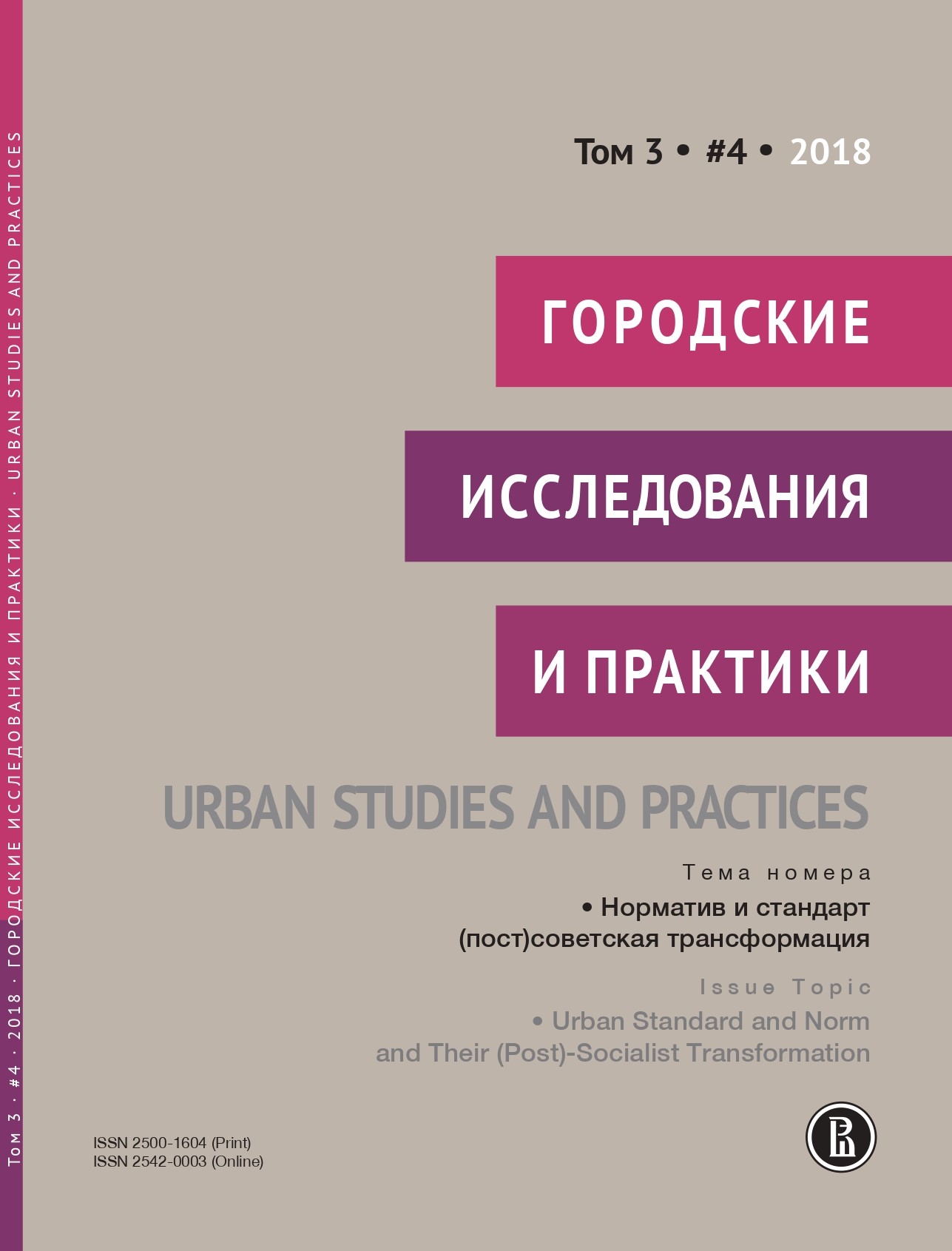First Steps to Industrialization: the Soviet Experience of the 1930s–1940s
Abstract
Urban planning and architectural standards were the result of the centralised distribution of material and financial resources among Peopleʼs Commissariats to realize governmental construction plans. Every Peopleʼs Commissariat should have received equal resources for housing and municipal-domestic service construction, for the same number of workers and employees, to ensure equal terms for them. Urban planning standards were a mechanism to meet these institutional and management challenges. As a result, urban planning standards ensured the stability of 5 mutually linked indicators: a) housing stock typology, b) building density and the intensity of territorial engineering equipment, c) the area of housing per person, d) the presence of a functional set of services for the citizens, prescribed by the planning authorities, and e) the area of the facilities for household waste, per resident.
Downloads
References
«О жилищной политике» (1967). Постановление ЦИК и СНК СССР от 4 января 1928 г. // Решения партии и правительства по хозяйственным вопросам. Т. 1. С. 698.
«Об опубликовании сборника-альбома типовых проектов и конструкций жилищного строительства и о применении их в строительстве при проектировочных работах». Постановление Пленума Строительной комиссии ЭКОСО РСФСР принято на основании постановления ВЦИК и СНК РСФСР от 31 декабря 1928 г. и ЭКОСО РСФСР от 23 мая 1929 г.
Иванов А.К. (1928) О жилищном строительстве промышленных предприятий (по поводу «Альбома типов жилых домов») // Строительная промышленность. No 6–7. С. 448–451.
Лугановский Э.В. (1931) К работам правительственной комиссии. М.; Л.: Гостехиздат.
Марковников Н.В. (1928) Экономический анализ типовых квартирных ячеек городского многоэтажного дома // Строительная промышленность. No 4. С. 293–296, 293.
Меерович М.Г. (2016) От городов-садов к соцгородам: основные архитектурно-градостроительные концепции в СССР (1917 – первая половина 1930-х гг.): дисс. ... докт. арх. Нижний Новгород.
Постановление ЭКОСО РСФСР «Правила и нормы застройки населенных мест, проектирования и возведения зданий и сооружений» // Наше строительство. 1930. No 1–2. С. 5–43.
Проекты рабочих жилищ (1929). М.: Изд-во Центрального коммерческого банка.
Проекты рабочих жилищ. Центральный банк коммунального хозяйства и жилищного строительства (1929). Москва.
СЗ СССР. 1927. Отдел первый. No 66. Ст. 672.
Современная архитектура (1929). No 1. С. 1.
СУ РСФСР. 1927. Отдел первый. No 118. Ст. 800.
Татаринов Е. (1928) О жилищном строительстве промышленных предприятий (по поводу «Альбома типов жилых домов») // Строительная промышленность. No 6–7. С. 451–453.
Типовые проекты и конструкции жилищного строительства, рекомендуемые на 1930 г. (1929). Официальное издание Строительной комиссии ЭКОСО РСФСР. М.: Гостехиздат.
Фонды Государственного архива Российской Федерации по истории РСФСР. Путеводитель. Т. 2. М.: РИО федеральных архивов. 1996. С. 72.
Хан-Магомедов С.О. (2001) Архитектура советского авангарда. М.: Стройиздат. Кн. 2.

